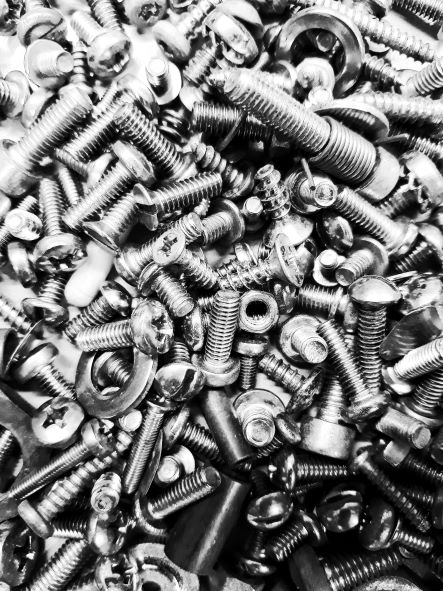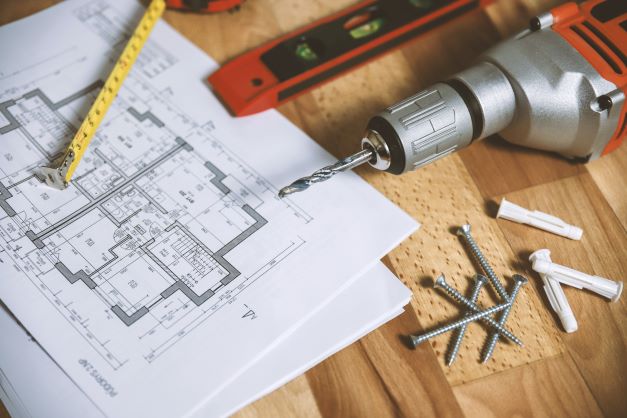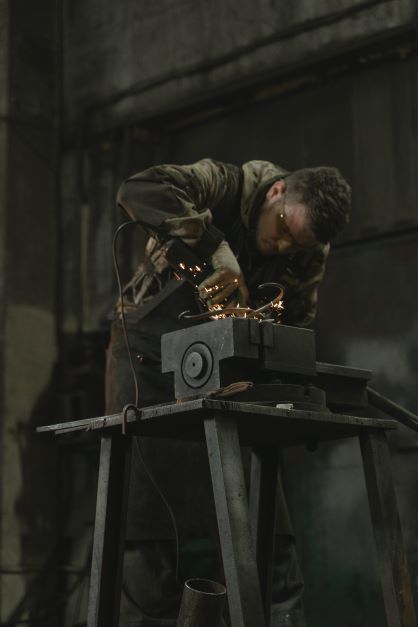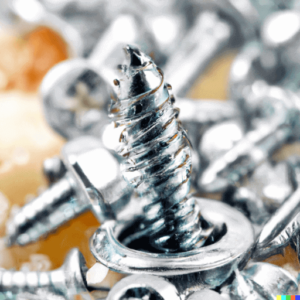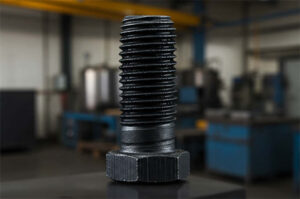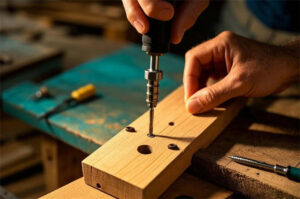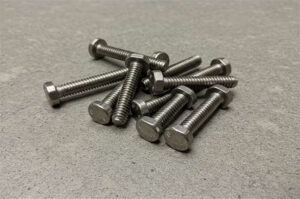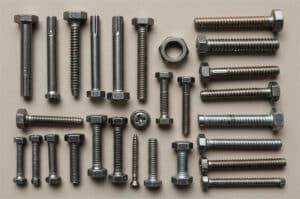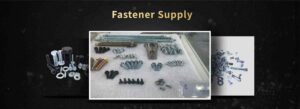Why Should I Select the Right Combination of Nuts and Bolts?
Nuts and bolts are crucial mechanical devices for many large sectors and industries. The important role they play in their specific purpose carry out thousands of solutions for security and safety. They are a great tool that allows the better performance of products and structures, especially in construction, automotive, energy plants, manufacturing establishments, and more.
Fasteners come in variations of types and components, they provide accuracy of performance when used correctly. Nuts are mechanical devices that although different from screws and bolts are the significant tool that enables the joint to stronger hold and have better quality assembly. Bolts are deemed the strongest fastener than have an excellent grip on surfaces and are better than screws in fastening. With the differences in characteristics, both fasteners are made a match and functional with each other. Bolts need nuts to increase and execute a full joint force in the application.
As known by many, fasteners have different qualities and kinds depending on their purpose and performance. But the fastening of materials will only be considered a success when done correctly. Hence, selecting the right combination of nuts and bolts is consequential, and it should be appropriately executed for an exceptional final result.
The factors that are affected in selecting the kinds of nuts and bolts
Strength and hold
Bolts and nuts are designed to match each other’s threads and capacity to hold materials during application. Without the other, the performance of bolts will lessen the strength of grip on the surface while nuts can’t function without a threaded rod or bolts for tightening. Both fasteners propose a greater result when properly installed with matching qualities. For example, when hex bolts are applied in joining materials a nut with a matching female thread or hex cap nuts are tightened along the shank.
Tension
Bolt tensioning, or preloading is the process of stretching the bolt to determine its elongation capacity. When preloaded bolts are tightened with a nut they should absorb a consistent amount of force to distribute around the surrounding making the joints resistant to loosening from vibration.
Durability
The durability of bolts is dependent on some aspects, they can’t sustain load on their own and are prone to wearing without some modification. With a nut tightened to bolted joints its ability to withstand wear from pressure and damage is enhanced.
Ability to absorb vibration
The conjunction of nuts and bolts provides multiple values within its fastened parts. To be able to resist loosening and permanent deformation, bolts and nuts are fabricated in specialization processes such as coatings and (varied) product testing. When used in critical applications like automotive engine parts they require multiple qualities like heat absorption, withstand shock and stretching, and corrosion resistance. To properly execute their function, fasteners such as bolts and nuts should possess a matching performance.
Resistance to corrosion
However, this is dependable on the types of materials that the fastener is made up yet it is also a factor that can be affected when selecting the correct types of bolts and nuts that go together. The surface environment of materials almost always requires a quality to resist corrosion of different kinds. Some types of steel can’t be used together as they will likely corrupt the other component.
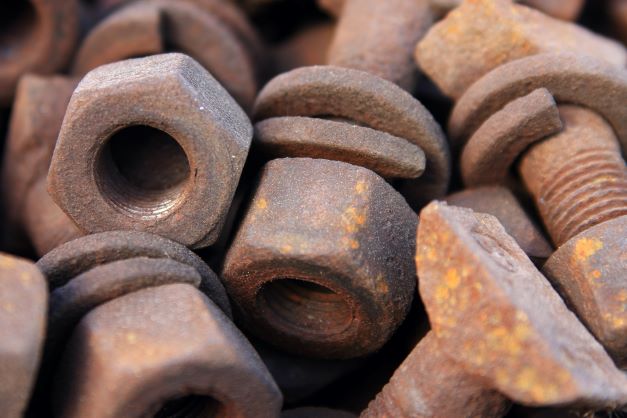
Raw Materials
The crafting of fasteners starts with the type of raw materials being used in fabrication as well as in finishings. There is a vast type of standard materials used in the production of bolts and nuts today to ensure an excellent quality of final products. With the help of technology, they are innovated to have greater performance, especially with the numerous considerations and requirements in fastening and surface material environments.
How to choose the right combination of bolts and nuts
Size and shape
The size and shape of fasteners play the biggest role in imposing the best results in conjunction. Bolts and nuts come in a vast range of shapes and sizes in diameter to meet the particular requirement in fastening. It is important to determine the correct thickness and length of components to them to provide an efficient functionality to joining materials.
Quality
There are numerous considerable categories in the qualities and features of bolts and nuts. The crucial application of fasteners requires many attributes that can withstand issues of fastening to provide security and safety. Some common qualities that are standard to choosing the right fasteners are strength, durability, resistance to corrosion, etc.
Type of finishing/coating
This method is the final modification of the strains of components in fasteners. Its primary purpose is to enhance the present qualities of bolts and nuts. With the right type of finishing on fasteners their ability to withstand stress and corrosion is improved than usual. In other standard applications finishing is not a requirement in fasteners.
What are the types of fasteners that match together?
Fasteners come in a wide range of kinds and uses, they are made to match consequential applications in joining materials and fastening. In many cases, fasteners can also require a counterpart material than can add more effectivity to the solution. The perfect example of this situation is the use of bolts and nuts together. They are a perfect partner that provides durability in the assembly of materials.
The key category of fasteners
Permanent
As the name implies, permanent fasteners are non-removable fasteners once installed. They are intended for single-use in joining materials together. There is an array of industries that uses this type of fastener for their quality to sustain the longevity of the application. The common permanent fasteners include rivets, nails, and welds they are known and generally found in automotive and consumer electronics.
Temporary
Fasteners under this category are designed specifically for the non-permanent or temporary joining of materials in surfaces. They allow the option to be removed (without damaging the materials they hold together) or reused in most applications. This type of fastener is commonly found in industries that are usually maintained or require critical properties. The known examples of components are bolts, screws, nuts, washers, and studs.
Broad definition of the types of fasteners
Threaded fasteners
- Bolts – are male threaded fasteners that come in variations of types that require a matching pre-formed component with a female thread such as a nut to provide an efficient hold in joining materials.
- Screws – are a general type of fastener that can hold materials together for an amount of good grip. They can be applied individually or with the use of another fastener (depending on situational issues) like a nut.
- Studs – are a substitute for bolt and nut assembly. They are a type of fastener that is headless and requires a double nut installation on both sides to provide connection of objects.
Nuts – used in combination with threaded fasteners specifically bolts and are internally pre-matched in threads to its partner type of bolts.
Washers – provides distribution of load and force around the surface surrounding for the durability of fastening. They are used together with bolts and nuts.
Rivets – a kind of permanent mechanical device to fasten materials in larger and flatter surfaces such as metal sheets.
Discovering the variations of types of fasteners
Bolts: Anchor Bolts, Arbor Bolts, Blind Bolts, Carriage Bolts, Elevator Bolts, Eye Bolts, Flange Bolts, Hex Bolts, Hull Bolts, J-Bolts, Lag Bolts, Machine Bolts, Hanger Bolts, Penta-Head Bolts, Plow Bolts, Rock Bolts, Round Head Bolts, Serrated Flange Bolts, Sex Bolts or Chicago Bolts, Shoulder Bolts, Socket Head Bolts, Square Bolts, Stud Bolts, T-Head Bolts, Tap Bolts, Toggle Bolts, Track Bolts, and U-Bolts
Screws: Chipboard screws, Decking screws, Double-ended screws, Drywall screws, Eyebolt screws, Framing screws, Fillister head screws, Hex cap screws, Hammer drive screws, Lag screws, Machine screws, Masonry screws, Oval head screws, Pan-head screws, Particle board screws, Square head bolts, Self-tapping screws, Self-drilling screws, Set screws, Shoulder screws, Sheet metal screws, Socket-head screws, Thread-cutting screws, Washer-faced screws, Wood screws, Weld screws, Tamper-proof screw, and Custom screws
Nuts: Hexagonal Nut, Square Nut, Ring Nut, Cap Nut, Cylindrical or Capstan Nut, Dome Nut, Wingnut or Thumb Nut, Flange nuts, Slotted hex nuts, Locknuts, Panel nuts, Coupling nuts, and Surface mount nuts
Washers: Spring washer (Belleville or conical washer, Dome spring washer, Wave spring washer, Finger spring washer, and Crescent spring washer)
Lock washer (Split lock washer, External tooth lock washer, and internal tooth lock washer)
Plain washer (Torque washer, Flat washer, Fender washer, Finishing or Countersunk washer, Shoulder washer, and C-washer)
Rivets: Solid, tubular, split, blind, drive, pop rivets, large flange pop rivets, and multi-grip rivets
Read the definitive information of each type>> What are the types of nuts, bolts, and screws?
Important considerations of fasteners and disadvantages of disproportion materials
It is known to consider important factors of fasteners that contribute to their function and performance. The applications of fasteners come in many variations, specific requirements, and environmental aspects that can affect the effectiveness of products. Therefore, knowing these factors allows us to determine the strength in high-quality and points of weaknesses that we can prevent. The following are some of the relative features in fasteners and attributes that are usually implied in a set of standards;
Raw Materials
Fastener manufacturers impose standard procedures and quality of materials to ensure the excellence of their products. The formidability of fastener parts relies on the type of components in the use for producing their different types. Many methods can also alter the feature it performs and overall effectivity but the primary reason for its functionality depends on what type of raw material is used. There are numerous elements used by fastener companies in fabrication but the most common types are Steel, Aluminum, Brass, Cooper, Nickel (Monel and Inconel), Stainless Steel (Martensitic, Austenitic, and Ferritic) Titanium, Berylium, and Nylon.
To have a detailed insight into fasteners (nuts and bolts) and their raw materials read along in this article >> What are Nut and Bolt Fasteners?
Fastener Types of Head
As the name suggests, the uppermost part of the fastener is the head. They come in a variety of types that allows the installation work easier along with other benefits to its foundation. The different types of heads on bolts and screws are essential to tooling during installation or removal.
Knowing the different head types of bolts/fasteners:
- Full-bearing
- Washer-faced
- Double-chamfered
- Square
- slotted-hexagon
- Countersunk
- Raised-countersunk
- Round
- Pan
- Cheese
- Raised cheese (fillister)
- Mushroom (truss)
- Hi-torque
- Phillips countersunk
- Phillips raised countersunk
- Phillips round-pan
- Phillips round
- Countersunk hexagon socket
- Button hexagon socket
- Flat or cap hexagon socket
- Knurled head
Fastener Types of Thread
When it comes to the fitting of bolts and nuts together the features of threading adhere to a successful installation. Threads provide the reliability of connection in materials being joined by determining the holding and grip capacity of the product to the surface. According to SAE or UNF (Unified Threads), there are six main types of threads recognized in the industry.
- UN/UNF
- NPT/NPTF
- BSPP (BSP, parallel)
- BSPT (BSP, tapered)
- metric parallel
- metric tapered
- On-hand thread identifying tools
Pitch Gauge
This tool is for gauging metric threads in millimeters of the distance between the crests of threads.
Caliper
Allows the measurement in diameter of external and internal threads on fasteners. A digital caliper is available for advanced users that need a quicker process of identifying the measurements.
- Screw thread types
- British Standard Whitworth (B.S.W.) – are asymmetrical V-thread with an axial angle measured at 55°. This type of thread is commonly found in bolts and screws that are used in applications with increasing vibrations such as the automobile and aero industry.
- British Association (B.A.) thread – a subtype thread of BSW which have a proportional thread in fine pitches, normally used in instruments and other precision work.
- American national standard thread – used for general purposes they have flat crests and roots in features for the capability to withstand rougher usage compared to V-shaped threads.
- Unified standard thread – was innovated from an agreement of three (3) countries to exchange machinery through a common screw thread system. They include an angle of 60° with rounded crests and roots.
- Square threads – have lesser strength than V-threads but are also less friction resistant to motion and with a higher efficiency making them convenient for use in the transmission of power. Such screw threads are found in machine tools, valves, spindles, screw jacks, etc.
- Acme thread – is a modified version of square threads and is much stronger. This type of thread is usually used on screw-cutting lathes, brass valves, and bench vices.
- Knuckle thread – another modification of square thread with a rounded top and bottom used for rough work areas. Knuckle threads are frequently used on railway carriage couplings, hydrants, necks of glass bottles, and large molded insulators used in the electrical trade.
- Buttress thread – comprises characteristics of low frictional resistance similar to square threads and comparable strength to V-threads. They are mainly used in transmitting force in one direction with an almost parallel axis.
- Metric threads – are similar features of BSW threads with an angle of 60° instead of 55° made by Indian standards.
- Guide to thread terminology
External Threads
Also known as male threads which means that threads are found in the shank of bolts and screws, as they were usually installed with nuts. They are visually external in the body of fasteners.
Internal Threads
Threads are found inside the circular hole of nuts that corresponds to threads on bolts and are called female threads in that manner.
Machine screw threads
Found in tapped holes from machine thread tools that are used for mating threads of nuts.
Space threads
Refers to the design of threads formed on pre-drilled holes, space threads are usually found in self-tapping screws, wood screws, and coach screws.
Lag screws
A great representation of screws that form their threads from pre-drilled holes in the metal to wood applications
Self-tapping screws
Efficient fastener screws provide easy installation on materials by their ability to create a hole with a matching thread in the surface.
Thread-forming screws
Typically used with a plastic material that is installed in the hole beforehand the screw, locking and securing the application in a higher amount of strength.
Type U-screws
Includes an unusual spiral head to be driven in the installation by a hammer into plastic or metal casings.
Wood screws
Features a tapered shank and sharp threads for efficiency in application to wood surfaces.
Read along >> How is a screw made?
- Additional fastener terminology
- Major Diameter – This refers to the diameter of the raised helix height (spiral shape or imaginary cylinder around the thread). Major diameter can only be measured through external threads in a screw with a slotted gauge or caliper rule.
- Minor Diameter – Specifically refers to the innermost part of the screw that is measured from the base or root of the thread using a piece of specialized equipment for accurate results.
- Effective Diameter – Another measurement of diameter requires special equipment to effectively get the average of major and minor diameters. They are measured halfway up the raised helix height.
- Pitch – refers to the distance of threads between a screw
- Crest – is calculated by subtracting the minor diameter from the major diameter. It is the external height of the thread.
- Thread angles – referred to simply as “the flank” because they are the actual angle of flanks on a screw. it is indicated to have the same degree of angle in symmetrical threads.
- Coarse and fine threads – both terms refer to the distance between the crest of each thread in a screw, smaller gaps create fine threads while larger ones create coarse threads.
Surface Materials
Surfaces that are present or area of the application of fasteners. They are the materials to be joined and held together. Surface materials depend on what project you are working on fastening, this is an important factor to be considered in choosing the correct type of products.
Wood
Woodworking is a large sector that uses fasteners in the development of another product or joining of wood materials commonly used in the construction industry. Usually, wood materials are found in furniture, cabinets, shelves, porch, ceilings and roofing, doors, kitchens, and more. Since wood is a natural element widely used in the creation of useful products for our daily activities, they are also prone to corrosion in surrounding components. The most common type of fasteners that apply to this work area is wood screws.
Metal
Various kinds of metal are used as fastening surfaces just as the vast types of metal components found in different fasteners. Metals are prone to rust and other types of corrosion which is why there is a need to compromise the corresponding elements of the application. Stainless steel fasteners are the preferable choice for most metal industries and assembly.
Concrete
Usually, concrete applications are used by the infrastructure industry. They cover a large sector of economic development in countries and require crucial fastening solutions.
Plastic
This surface material commonly uses standard fasteners as they usually require low-profile quality due to considerable areas of work. The common plastic materials that work together with fasteners are in the electrical industry and industrial manufacturing (such as toys, plastic products, and others).
Manufacturing Equipment
Fastener suppliers provide a professional service of manufacturing their products in a high-quality and standard management system. They aim to implement the use of efficient machinery and types of equipment to achieve optimal results. Conventional machine tools: lathes, milling machines, drill presses, sharp cutting tools, CNC machining, and other fastener manufacturing machines or tools.
The different machinery delivers distinct and specific performance in fabrication and process depending on the required output of the product. It is considered a vital factor that contributes to choosing the correct fastener because this method can also imply a difference in the function of the fastener assembly.
Selecting precise nuts and bolts is a pivotal task to effect a successful assembly. There will be more technicalities in fastener materials that need to be depicted in the requirement for the kind of application or project that they will be used for. To know the significant details of using fastener solutions you will need to have deep research about their qualities and important factors that will matter most in the overall process.
Need a reliable fastener supplier?
Check out >> Prince Fastener Manufacturing Co., Ltd
Contact us now and inquire about our services.
